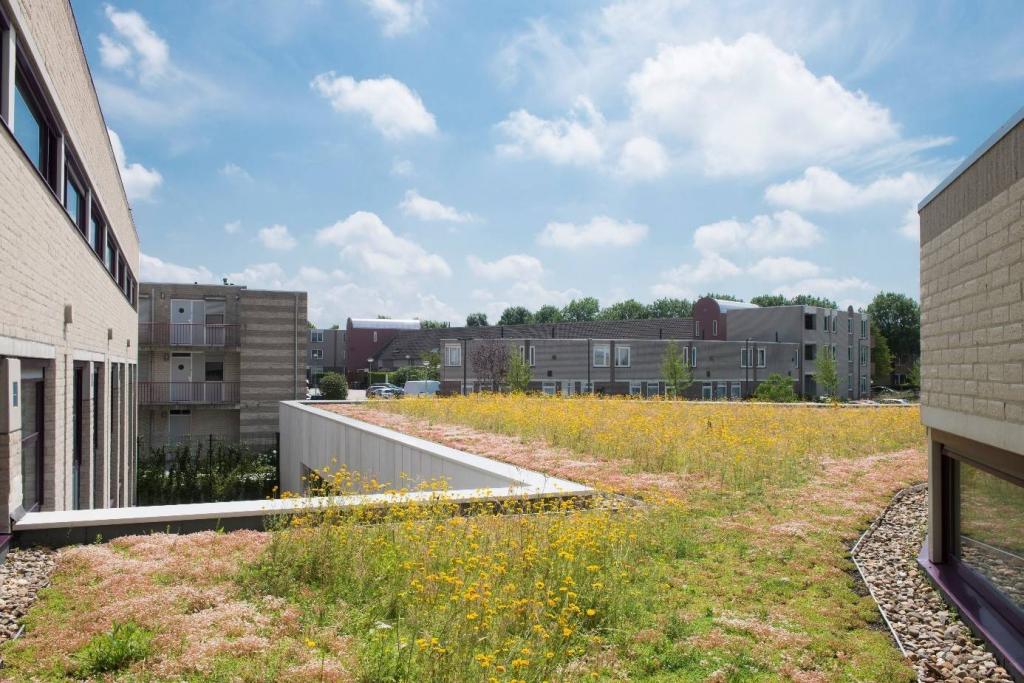Nature Roof
Turn your gray roof into a beautiful piece of nature or a flower meadow. The planting of a nature roof consists of sedum, grasses, perennials and various herbs. These plantings have a lot of variation in flowering time and bloom color. This not only looks beautiful, but is also a pleasant habitat for birds, butterflies, bees and other insects. Because the package is thicker, a natural roof can hold more water.
Want to create a nature roof? The steps are similar to building a sedum or retention roof. However, you do use different materials and plants. The natural roof requires a thicker substrate layer and a higher drainage slab. The substrut layer and dranaige plate are the carpet pad and base of the green roof.
Cost
The cost of a natural roof is higher than a sedum roof because it requires more material.
Space use
A natural roof doesn't cost extra space in your yard.
Difficulty
It is important that the roof can support enough weight to prevent leaks. The roof structure must have enough load-bearing capacity.
Earthmoving
No earth moving is required. However, the substrate and plants must be installed on the roof.
Maintenance
As in the garden, plants on the roof also need maintenance. Fertilizing annually is good for the plants. Tip: Before installing, think about maintenance. Checking drainage is important.
Climate Goals
Natural roofs reduce heat stress. In addition, rainwater runoff is slowed and reduced. The roofs also contribute to biodiversity through the variety of planting. A combination with an infiltration facility is sometimes necessary to absorb larger peak rainfall events.
Biodiversity
Contribution to improving biodiversity
Points of interest
- The roof must be able to support at least 100 kg/m2.
- Try to keep grasses away from plantings.
- Because the parcel is thicker, a natural roof can hold more water.
- During maintenance, weeds must be removed.
- Check the drains regularly.
